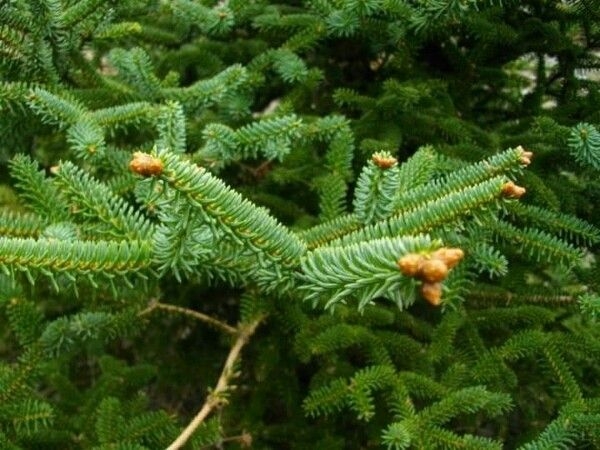Spanish Fir
(Abies pinsapo)
Spanish Fir (Abies pinsapo)
/
/

Patricia Carrasco
CC BY-SA 4.0





















































Estimated Native Range
Summary
The Spanish Fir is valued for its unique foliage color and texture, making it a distinctive choice for ornamental plantings in parks and large gardens. It is also used for reforestation in its native range due to its adaptability to mountainous conditions. In cultivation, it requires full sun to part shade, consistent medium moisture, and well-drained soils to thrive. While it is not a fast-growing species, its slow growth rate contributes to a dense and shapely form. Gardeners should be aware that Abies pinsapo can suffer from root rot if planted in poorly drained soils and may be susceptible to pests such as aphids and scale insects. It is also important to note that this species is not tolerant of pollution or salt, limiting its use in more urban or coastal environments.CC BY-SA 4.0
Plant Description
- Plant Type: Tree
- Height: 50-75 feet
- Width: 15-30 feet
- Growth Rate: Slow
- Flower Color: N/A
- Flowering Season: Non-Flowering
- Leaf Retention: Evergreen
Growth Requirements
- Sun: Full Sun, Part Shade
- Water: Medium
- Drainage: Medium
Common Uses
Bird Garden, Border Plant, Deer Resistant, Fragrant, Low Maintenance, Potted Plant, Rabbit Resistant, Rock Garden
Natural Habitat
native to the mountains of southern Spain and northern Morocco, where it grows in cool, humid conditions at high elevations
Other Names
Common Names: Hedgehog Fir, Andalusische Tanne, Spanische Tanne, Abeto De España, Pino Pinsapo, Pinsapo, Sapin D’Espagne, Abete Di Spagna, Spaanse Zilverspar, Abeto-Espanhol
Scientific Names: , Abies pinsapo, Abies pinsapo var. glauca, Abies pinsapo var. argentea, Abies pinsapo f. argentea, Abies pinsapo f. glauca, Abies pinsapo f. pendula, Abies pinsapo var. pendula, Picea pinsapo var. argentea, Picea pinsapo var. glauca
GBIF Accepted Name: Abies pinsapo Boiss.